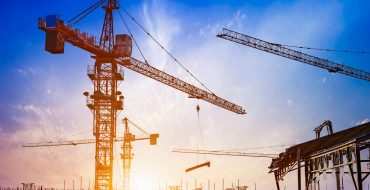
Biden Infrastructure Plan Faces Harsh Construction Market *Propmodo
Read original article here
Nearly all of us agree much of American infrastructure needs to be upgraded or, in many places, replaced. Bipartisan congressional groups are now quibbling about the price tag of President Biden’s proposal. Right now it is looking like $2.3 trillion dollars will go towards the American Jobs Plan, which the media has dubbed “the infrastructure bill,” but in a construction market plagued by a lack of construction workers and record-high material prices, $2.3 trillion won’t go as far as you think. The Biden Administration could be in for sticker shock if the supply and demand of construction material don’t balance before building.
This year alone construction companies will need to hire 430,000 more workers than in 2020, according to U.S. Bureau of Labor Statistics data released today by Associated Builders and Contractors. Those numbers do not account for Biden’s infrastructure plan, which plans to create millions of new construction jobs across the United States. Factoring an infrastructure plan passing leading to a higher job growth rate means nearly 1 million construction workers could be needed this year. Building the workforce needed to implement a nationwide construction plan will likely increase workers’ average salary, limiting the effectiveness of the massive government spending. Creating high-paying jobs is part of Biden’s infrastructure plan but cost-effective spending will be crucial to successful implementation.
“The skilled trades are in dire need of workers right now, with a particularly high demand for apprentice-level and skilled labor positions. These are steady, well-paying jobs that hold a bright future, even in an unpredictable economic climate,” said Jill Quinn, executive leader of PeopleReady Skilled Trades. “For the millions of Americans who are struggling in their job hunt right now, our message is simple: Consider a career in the skilled trades.”
Then there are materials, which are currently experiencing a price shock. Infrastructure projects need enormous amounts of steel, iron, and concrete, which the United States does not produce enough domestically to supply. The global pandemic, President Trump’s trade policies, hamstrung suppliers, and sky-rocketing demand have had practically every construction material spiking. Iron and steel prices are up 45 percent and 36 percent respectively. Copper wire and cable prices are up 18 percent and 11 percent. Concrete prices are up 20 percent. Lumber is going crazy, some types are up triple digits. Despite the ability to buy in bulk at an unfathomable scale to get better pricing, prices like these severely limit the federal government’s purchasing power.
“The latest round of material price increases and availability concerns have only heightened our need to employ creative solutions to minimize these impacts,” Josh Lawrence, vice president of preconstruction and chief estimator at McCarthy Building Cos., told Engineering News-Record.
It’s not too late for the Biden administration’s plan to succeed. The key will be straightening out material supply chains quickly to bring supply and demand back into balance. To do this Biden launched a 100-day review of supply chains critical to national security, public health, and public safety. The Biden Administration has been hosting meetings with industry executives to iron out issues. Many of the supply chain woes are beyond the White House’s control. Global shipping is being slowed by more than one blocked canal. Ships with supply sit anchored all across the globe, waiting for back-logged personnel to unload them. A shortage of shipping containers has exacerbated the problems as pandemic trade routes twist global trade’s steady back-and-forth motion.
The prospect of massive government infrastructure spending itself will help to balance supply and demand for material and workers. Producers have an extra incentive to keep the furnaces lit longer and workers are more eager to supply labor when wages rise. High prices could also boost domestic production, helping the United States to be more self-reliant, especially if the Biden administration ‘Buy American’ directive is fully implemented in his infrastructure plan.
“It’s large, but we’ve got a large problem,” Moody’s Analytics Chief Economist Mark Zandi told CNN host Jake Tapper. “The current amount of investment we’re doing is barely, barely enough to keep pace with just the maintenance of the infrastructure. The package is large, but the need is very large.”
The stock market is already anticipating a windfall from Biden’s infrastructure plans. Global X U.S. Infrastructure Development ETF, which invests in businesses that benefit from infrastructure activity, is up 21 percent year to date. The ETF has had returns close to 92 percent over the past 12 months. Stock in Freeport-McMoRan, the world’s largest copper producer, is up roughly 29 percent year to date. Martin Marietta Materials, a supplier of aggregates like sand and gravel is up about 22 percent. Stock in one of America’s largest steelmakers, Nucor, is up almost 50 percent. The possibility of more than 200 million tons of cement being needed to build Biden’s infrastructure plan has shares of US Concrete up 62 percent in 2021.
Biden’s plan is far from a done deal. First, Congress will need to decide the definition of what infrastructure is before it decides how (or if) the plan will be paid for. At least half of the plan’s elements don’t actually claim any relationship to infrastructure as most people understand it. Negotiations on Capitol Hill have only just begun, with Republican lawmakers counter offering a $600 billion plan that focuses on traditional infrastructure and is paid for in part with unspent COVID relief money. However, it’s possible Democrats pass the plan without a single Republican vote, just like they did with the last COVID-19 spending bill. As D.C. politicians jockey, America waits, watching our infrastructure fade before our eyes and under our feet.